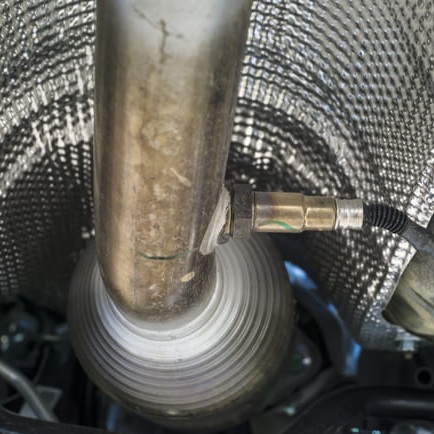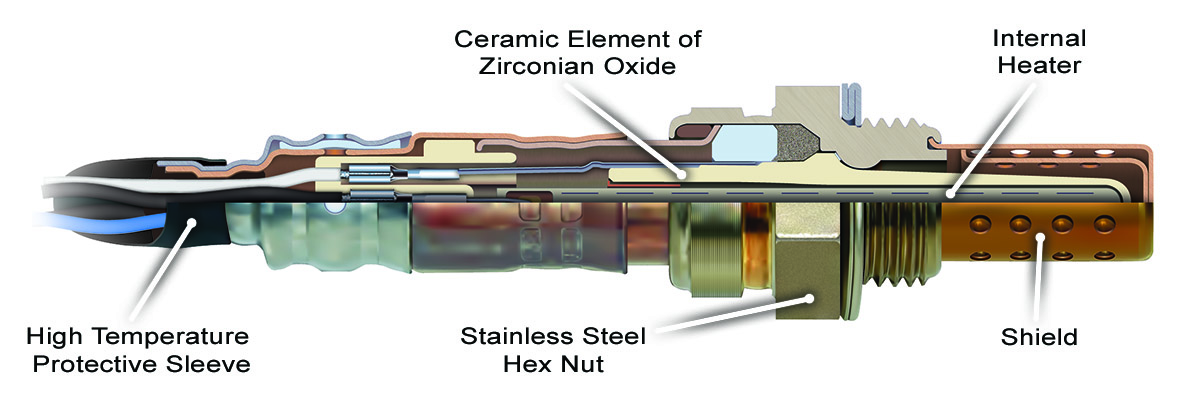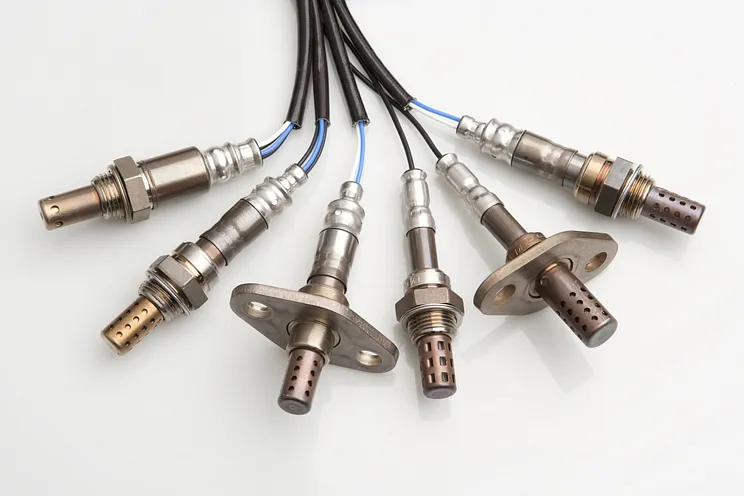Net price: 18 €
Net price: 70 €
Net price: 27 €
Net price: 29 €
Net price: 102 €
Net price: 86 €
Net price: 78 €
Net price: 29 €

The lambda sensor, also known as an oxygen sensor, is an essential component of modern engines. It helps maintain the optimal air-fuel ratio, which not only maximizes engine performance but also contributes to minimizing emissions. This article explains how the lambda sensor works, the types available, and its role in the worlds of tuning and motorsports.
What is a Lambda Sensor, and What is Its Role?
The lambda sensor is located in the exhaust system and measures the oxygen content of exhaust gases. The data it collects is used by the engine control unit (ECU) to regulate the air-fuel mixture. The ideal ratio is 14.7:1 (air to fuel), known as the stoichiometric ratio, which is critical for efficient combustion and low emissions.
Key functions of the lambda sensor:
Reducing emissions: The optimal mixture minimizes the release of harmful substances.
Improving performance: It provides accurate data to the ECU, enabling precise control of fuel injection.
Economic operation: The optimal fuel usage reduces fuel consumption.

Types of Lambda Sensors
Unheated Lambda Sensor:
The oldest type, relying on the heat of exhaust gases to function.
Slow to reach operating temperature, making it less efficient during cold starts.
Heated Lambda Sensor:
Equipped with an internal heating element that quickly reaches operating temperature.
Delivers more accurate readings even after cold starts.
Wideband Lambda Sensor:
Capable of precisely measuring mixture ratios across the entire RPM range.
Ideal for tuned and racing engines, where precision is crucial.

The Role of Lambda Sensors in Tuning
In tuned engines, the lambda sensor helps maintain the correct mixture ratio, which is vital for maximizing performance and protecting the engine.
Benefits in tuning:
Performance optimization: The lambda sensor provides essential data for fine-tuning the ECU.
Safe operation: Precise mixture regulation prevents detonation and overheating in the cylinders.
Validation of tuning settings: During dynamic tests, the lambda sensor helps monitor the effects of adjustments.

Importance of Lambda Sensors in Motorsports
In racing engines, the lambda sensor is indispensable for ensuring reliable performance and durability.
Specific advantages in motorsports:
Fast response time: The lambda sensor adapts to the rapid load changes of race cars, providing real-time data.
Heat-resistant design: Specialized materials ensure resilience to high exhaust gas temperatures.
Data collection and analysis: The data gathered on the track helps fine-tune the engine control system.
Signs of Lambda Sensor Failure
Increased fuel consumption: Incorrect data sent to the ECU may result in a richer mixture.
Reduced performance: A non-optimal mixture ratio can cause sluggish acceleration.
Higher emissions: Incomplete combustion leads to increased pollutants.
Conclusion
The lambda sensor is indispensable in modern vehicles, tuned engines, and motorsports alike. It helps maintain the optimal air-fuel ratio, enhances engine performance, and reduces emissions. Choosing the right type and performing regular maintenance are essential for ensuring efficient and safe operation.